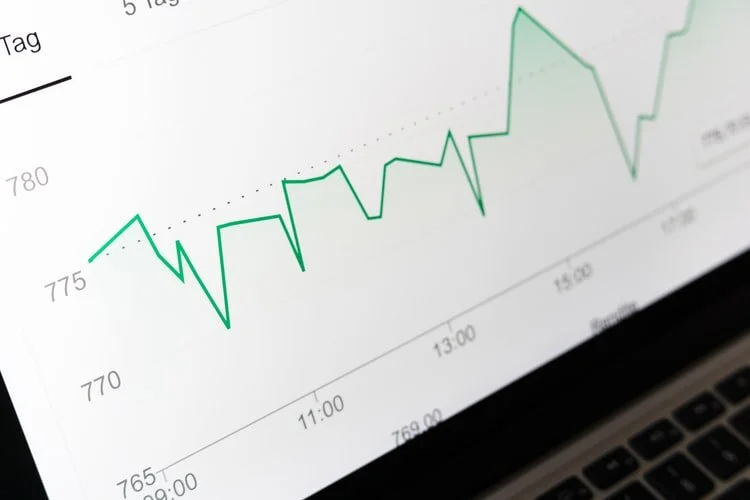In this week’s post I’m going to take you through some basic Google Analytics data analysis. We’ll start with a look at where you can find simple information as well as what the terms mean.
A Simple Starter Dataset
When you’re inside Google Analytics go to Acquisition > All Traffic > Source / Medium. Many SEOs use this as their “homepage” of Google Analytics because it displays a lot of crucial information in a very succinct way.
Once you’re at the Source / Medium page then make sure to change the date in the top right. Typically, we report Monthly using Year-over-Year data. This is used to avoid seasonality, an example would be comparing June 2020 vs June 2019.
After that, you’ll have a line graph at the top and a giant table under it with a lot of strange words. Let’s take a look at what all these strange words mean.
Google Analytics Metric Meanings:
First, let’s go over everything you see in the Source/Medium column. The first one is the source, which means “the company that referred the traffic”. If Bing supplied the PPC traffic, the source would be Bing. If it was a referral, it’d be the website domain. Some examples you’ll see are Google, Facebook, Yahoo, Instagram, etc. These are the main traffic movers on the internet.
The second is the Medium which is the “method by which they entered your site”. The types of methods are:
Organic - People who Google a keyword and find your site in the Organic section. Not applicable for any Google.com listings with “Ad” next to them. Those will be at the very top or very bottom.
Direct / (None) - This is a combination of Direct, which is anyone who types in the site URL directly, and a wastebasket of users Google doesn’t know what to do with. As your site grows in traffic, the percentage of this traffic will typically fall dramatically.
CPC - This means “Cost Per Click” and is a strange abbreviation used for PPC (Pay Per Click) traffic. These are for clicks on the Ads that I mentioned previously in #1. When you search on Google, you typically get a combination of CPC ads and Organic ads. Why Google didn’t call this medium “PPC” is beyond me, no one uses this acronym anymore.
Referral - This is website-to-website traffic. If my website had a direct link to your website and someone clicked the link, your Analytics would see one referral visit from my site.
Custom Methods - Some types of tracking let you put in your own source and medium, which is why you may occasionally see “email”, “social” and other mediums in there. If the Medium is not one of the ones I listed above then it is a Custom Method. That’s important to know, because a lot of people think Google Analytics automatically tracks Email Newsletter Traffic, Social Media Traffic, etc. It does not, those are typically done through Pixels or something called UTM Tracking.
Other Terms from the table include:
Users - The raw number of people who visited your site
New Users - The raw number of people who visited your site who had not in the previous 30 days (this number can be altered).
Sessions - If the same person visits twice, that’s 1 user but 2 sessions. This metric just means total visits regardless of if the same person visits multiple times.
NOTE: When looking at data, either use “Users” or “Sessions” for all of your reporting. Do not mix them, it gets really confusing. Either one is valid, but only pick one.
Bounce Rate (Default) - The percentage of sessions that leave without visiting a second page. Average Bounce Rate is around 45-50% for most websites. We typically shoot for 35% here. Anything below 20% is usually indicative of a tracking error.
Bounce Rate (ABR) - The percentage of sessions that leave without visiting a second page or spending 30 seconds on site.
NOTE: ABR (Adjusted Bounce Rate) is a snippet of code you can add to improve tracking. Websites do not have this by default. It’s an amendment to the Bounce Rate definition since the base definition is extremely unfair, particularly to smaller sites. All 1-pagers, by definition, used to have 100% Bounce Rates.
Pages / Session: This is simple Total Pageviews divided by Sessions. It’s the average number of pages someone will visit per session. We typically shoot for 2.5 to 3.0 here.
Avg. Session Duration - The average amount of time a user spends on the site. We typically shoot for 2:00-2:30, though a lower number could just be the result of people converting fast as well. Oddly enough, this can be the hardest metrics to analyze and improve.
On the far right side you’ll see Goals and Events. I won’t get into these, but they’re ways to track conversions (form submissions, contact requests, etc). If you have an eCommerce site then you’ll see 3 final metrics:
eCommerce Conversion Rate: The percentage of sessions that resulted in an eCommerce transaction.
Transactions: The number of parties who transacted.
Revenue: The total amount of money gained from website sales.
I’m going to be continuing this guide series, so make sure to bookmark the blog and check back for the next part!


